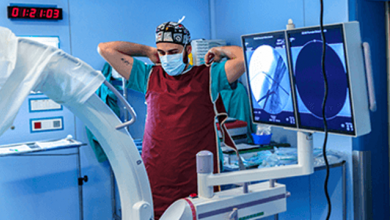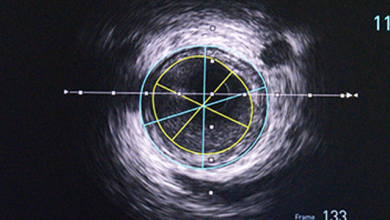Search results
Author(s):
Jean-Claude Tardif
,
Therese Heinonen
Added:
3 years ago
Atherosclerotic cardiovascular disease is the result of a continuous and deleterious interaction between components of the vascular wall and the circulating blood. Circulating lipids and lipoproteins play a significant role in the initiation of fatty streaks and the subsequent progression to complex and vulnerable atherosclerotic plaques. The important role that circulating lipids play in…
View more
Author(s):
Richard E Katholi
Added:
3 years ago
Contrast-induced nephropathy (CIN) represents an increasing healthcare burden and challenge as the frequency of diagnostic imaging and interventional studies increase, particularly among populations at risk of developing CIN. As the population ages, decreased renal function and increased atherosclerotic cardiovascular disease become more prevalent. Increasing levels of obesity with resultant…
View more
Homocysteine-lowering Treatment in Reduction of Stroke and Coronary Vascular Risk - Do Not Give Up
Author(s):
Wolfgang Herrmann
,
Rima Obeid
Added:
3 years ago
Article
Author(s):
K Lance Gould
Added:
3 years ago
Clinical applications of cardiac positron emission tomography (PET) have made dramatic advances over the past three years, particularly in myocardial perfusion imaging. These advances include cardiac-specific PET technology, specialized software, and profound biological insights into myocardial perfusion far beyond the traditional binary interpretation of perfusion images as normal or abnormal…
View more
Author(s):
Deepak Padmanabhan
,
Sandeep Shankar
,
Avinash Chandrashekharaiah
,
et al
Added:
3 years ago
Ionizing radiation is a workplace hazard that goes undetected. In the cardiac catheterization laboratory, where various interventional and electrophysiological procedures are done, physicians and other staff are exposed to ionizing radiation daily. The amount of radiation exposure in the catheterization laboratory is exponentially more compared to other departments using X-ray and fluoroscopy,…
View more
Author(s):
Martha Gulati
Added:
1 year ago
ESC Congress 2022 — In this short and practice-focused review, Dr Martha Gulati, Associate Director of the Barbra Streisand Women Heart Center and Director of CVD Prevention(Cedars-Sinai Medical Center, US) shares some her thoughts on the top 3 hot line trials.
Trials covered in detail include:
00:27: TIME:The Treatment in Morning versus Evening
01:57: SECURE:A polypill strategy in secondary…
View more
Role of IVUS in Complex PCI
Author(s):
Brandon Quintana
,
Akram Ibrahim
Added:
3 years ago
Article
Author(s):
Raman Dusaj
,
Jonathan S Reiner
Added:
3 years ago
The rapid development of percutaneous coronary and peripheral vascular interventional technologies, as well as non-invasive computed tomography (CT)-based imaging systems, has led to a dramatic increase in the number of patients receiving intravenous or intra-arterial contrast media (CM). It has been estimated that more than 80 million doses (8 million litres) of contrast material are…
View more
Author(s):
Abdulah Alrifai
,
Mohamad Kabach
,
Jonathan Nieves
,
et al
Added:
3 years ago
More than 10 million Americans suffer annually from angina.1 For decades, most of the attention has been focused on epicardial coronary artery disease (CAD). In a European registry of 11,000 stable angina patients, 65% of women and 32% of men had no obstructive CAD (<50% stenosis); however, multiple other studies have demonstrated only 30% of patients have significant obstructive epicardial…
View more














 « First
« First